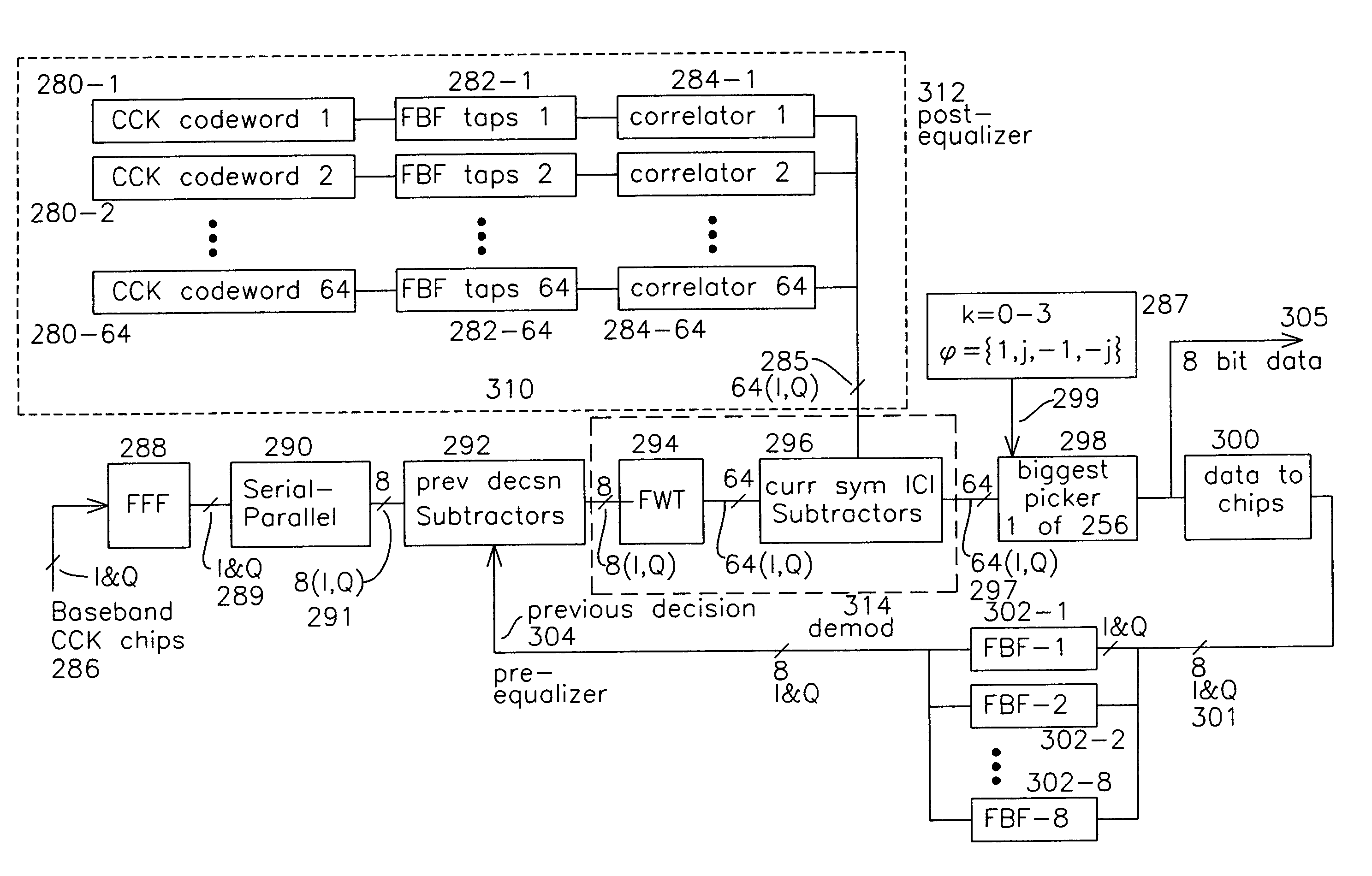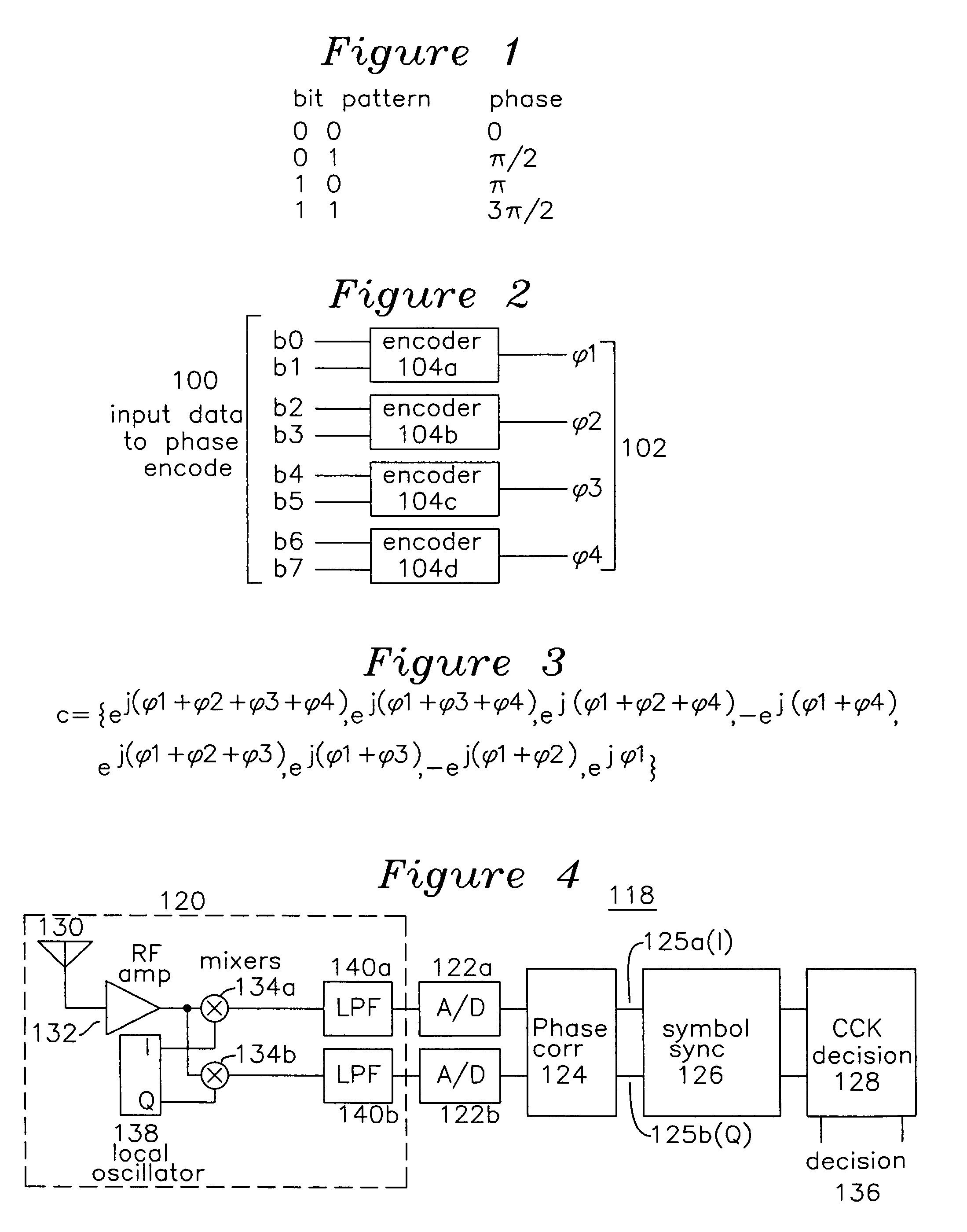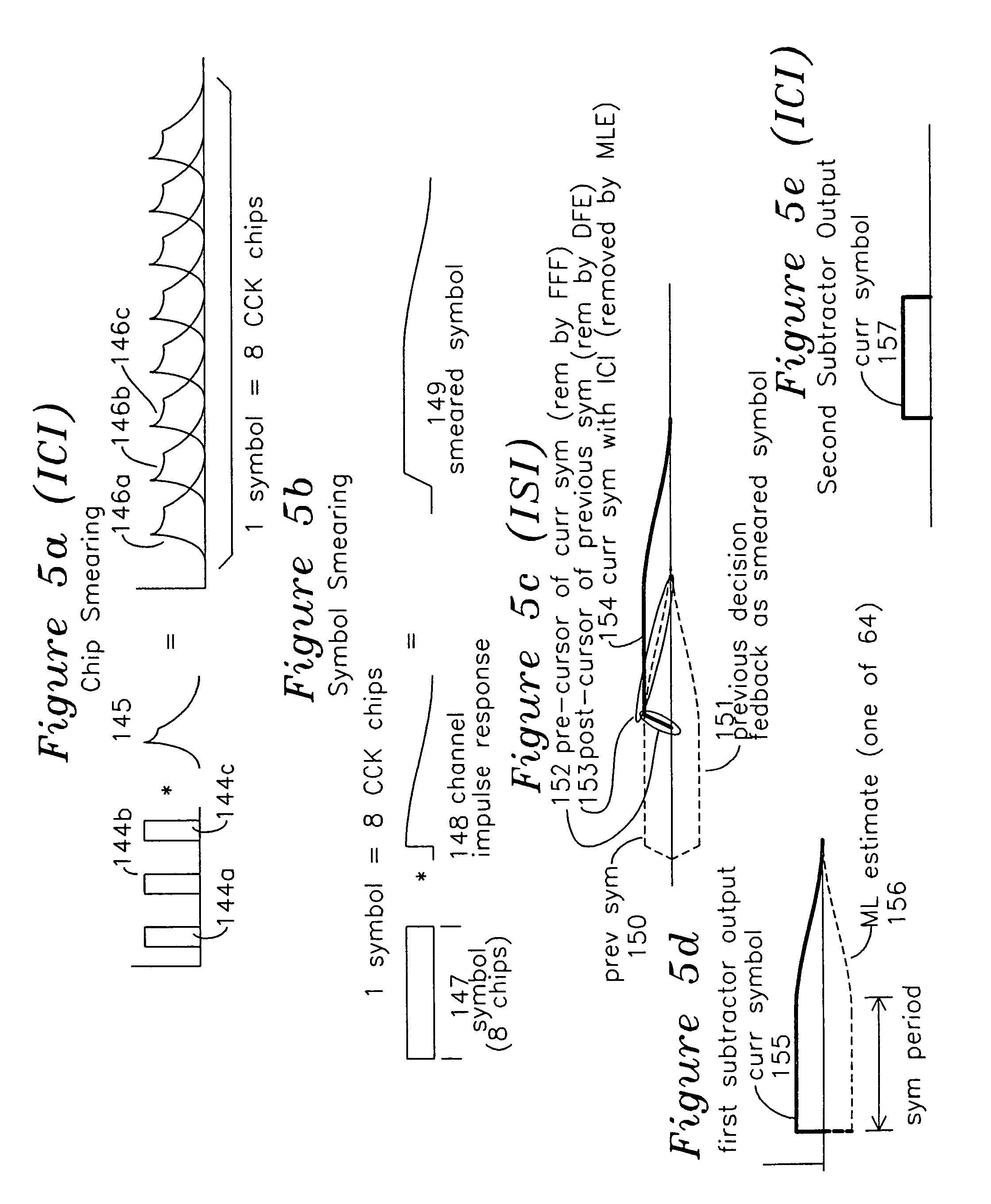Maximum likelihood block decision feedback estimation for CCK demodulation apparatus and method
a decision-backward estimation and probability-based technology, applied in the field of demodulation of cck code symbols, can solve the problems of multipath reflection, bleeding, or spreading, of individual cck chips, and channel is more susceptible to bit errors
- Summary
- Abstract
- Description
- Claims
- Application Information
AI Technical Summary
Benefits of technology
Problems solved by technology
Method used
Image
Examples
Embodiment Construction
[0045]The approach as shown in FIG. 9 describes the advantages of using decision feedback equalization for removing inter-codeword ISI by estimating current symbol ICI and subtracting it to improve the decision on the current symbol. An implementation of the circuitry in FIG. 9 would entail a very extensive set of multipliers and adders. Each of the 64 feedback filters 282-1 through 282-64 would require approximately many adders and multipliers, and each of the correlators 284-1 through 284-64 would require many adders and multipliers. The 16 feedback filters 302-1 through 302-8 each require many adders and multipliers, and the current symbol subtractor 296 requires 64 simultaneous complex subtractions.
[0046]FIG. 11a shows the block diagram for a reduced complexity CCK demodulator including decision feedback equalization for pre-equalization as well as for post-equalization, and may be understood in combination with the operating waveforms of FIGS. 10a-10f. It is understood that the...
PUM
 Login to View More
Login to View More Abstract
Description
Claims
Application Information
 Login to View More
Login to View More - R&D
- Intellectual Property
- Life Sciences
- Materials
- Tech Scout
- Unparalleled Data Quality
- Higher Quality Content
- 60% Fewer Hallucinations
Browse by: Latest US Patents, China's latest patents, Technical Efficacy Thesaurus, Application Domain, Technology Topic, Popular Technical Reports.
© 2025 PatSnap. All rights reserved.Legal|Privacy policy|Modern Slavery Act Transparency Statement|Sitemap|About US| Contact US: help@patsnap.com



